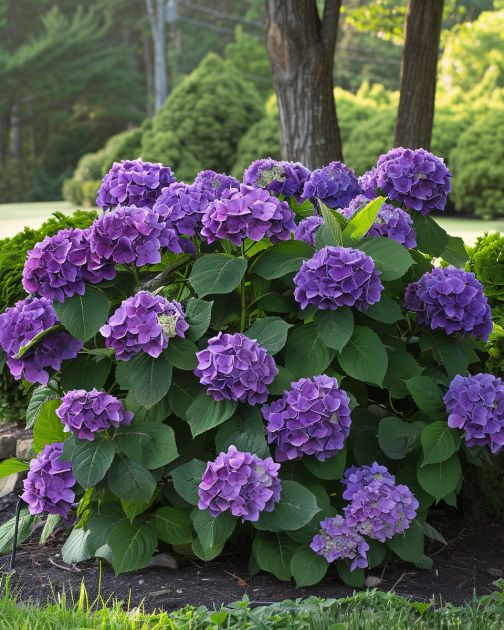Hydrangeas are the epitome of summer beauty. With their large, vibrant blooms and soft petals, they bring an elegant and timeless charm to any garden. However, many gardeners struggle with getting the most out of their hydrangea plants. From sparse blooms to wilting flowers, these beautiful shrubs can sometimes seem a bit finicky. But don’t worry—if you’re aiming for fuller hydrangeas that bloom year after year, there’s an effective gardening trick you can use to encourage healthy growth, abundant flowers, and long-lasting blooms.
In this comprehensive guide, we will take a deep dive into everything you need to know to grow fuller hydrangeas. From understanding the different types of hydrangeas and their specific needs to advanced techniques like pruning, fertilizing, and hydrangea care during various seasons, we’ll equip you with the knowledge and tricks to ensure your hydrangeas thrive in your garden for many years to come.
Understanding Hydrangeas: A Brief Overview
Hydrangeas (genus Hydrangea) are popular flowering shrubs that are often chosen for their showy, large blooms that come in an array of colors, including shades of pink, blue, white, and purple. These shrubs are native to North and South America as well as parts of Asia, and they thrive in temperate regions around the world.
There are several types of hydrangeas, each with its own blooming characteristics. Understanding which variety of hydrangea you have is essential for knowing how to care for them and how to encourage fuller blooms. The main types of hydrangeas include:
- Bigleaf Hydrangeas (Hydrangea macrophylla): These hydrangeas are known for their large, rounded blooms, often in shades of pink, blue, or purple. They are commonly found in gardens and are the most popular variety.
- Panicle Hydrangeas (Hydrangea paniculata): This variety produces cone-shaped blooms that start white and gradually turn pink as the flowers mature. They tend to be more heat-tolerant and are often used for hedges or as accent plants.
- Smooth Hydrangeas (Hydrangea arborescens): Smooth hydrangeas, such as the popular ‘Annabelle’ variety, produce large, white blooms. They are hardy and can tolerate colder climates.
- Oakleaf Hydrangeas (Hydrangea quercifolia): Known for their oak-shaped leaves and stunning white blooms, oakleaf hydrangeas are prized for their attractive fall foliage as well as their flowers.
Choosing the Right Spot for Your Hydrangeas
The first step to ensuring fuller hydrangeas is selecting the perfect planting location. Hydrangeas are known to be relatively adaptable, but they do have certain environmental preferences that will significantly impact their growth and blooming potential.
1. Light Requirements
Most hydrangeas do best in partial shade, especially in regions with hot summers. Too much direct sunlight can scorch their leaves and cause the flowers to wilt prematurely. On the other hand, too little light may result in weak, leggy plants with fewer blooms.
Here’s a general rule of thumb:
- Bigleaf and oakleaf hydrangeas: These varieties thrive in partial shade, ideally receiving 4-6 hours of direct sunlight per day, with some afternoon shade.
- Panicle hydrangeas: These are more sun-tolerant than other varieties, and they can handle full sun (6-8 hours of sunlight), which can promote more blooms.
- Smooth hydrangeas: They can also tolerate partial shade but can thrive in slightly more sun than bigleaf hydrangeas.
2. Soil Conditions
Hydrangeas prefer slightly acidic to neutral soil with a pH between 5.5 and 6.5. Well-draining soil is essential for hydrangea health, as standing water can lead to root rot. Adding organic matter such as compost can improve soil fertility and drainage, creating a more favorable environment for hydrangea growth.
3. Space for Growth
Hydrangeas need plenty of space to grow and spread out, so when planting, make sure to leave enough room for the shrub to reach its full size. Typically, hydrangeas should be planted 3-6 feet apart, depending on the variety. This allows for good air circulation, which helps prevent disease and encourages strong growth.
Hydrangea Care: The Key to Fuller Blooms
Now that you’ve chosen the perfect spot for your hydrangeas, it’s time to focus on the care and maintenance that will help ensure your plants produce fuller, more abundant blooms year after year. There are several crucial aspects of hydrangea care that can help you achieve the best results.
1. Watering Your Hydrangeas
Click page 2 to continue




